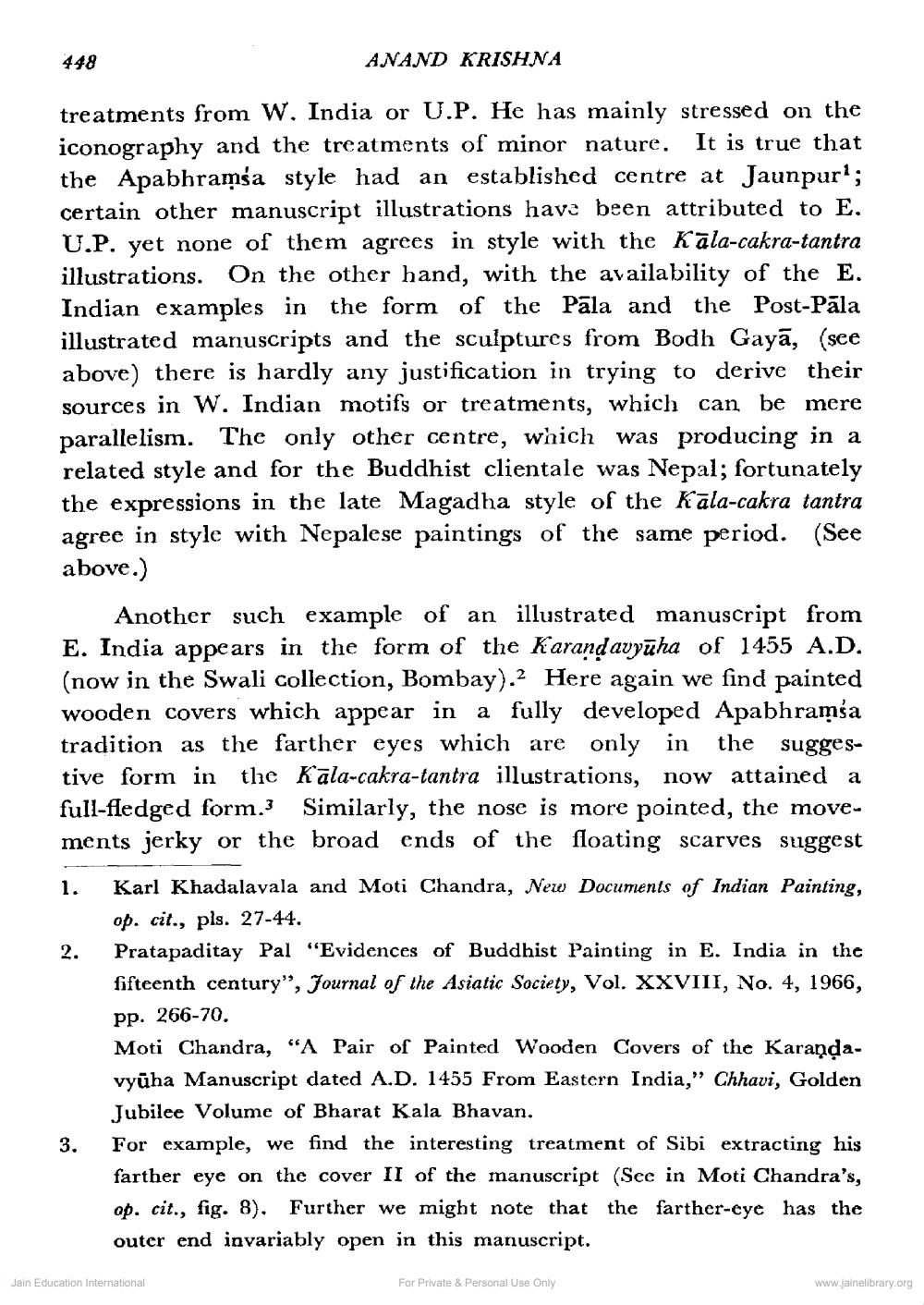________________
448
treatments from W. India or U.P. He has mainly stressed on the iconography and the treatments of minor nature. It is true that the Apabhramśa style had an established centre at Jaunpur1; certain other manuscript illustrations have been attributed to E. U.P. yet none of them agrees in style with the Kala-cakra-tantra illustrations. On the other hand, with the availability of the E. Indian examples in the form of the Pala and the Post-Pala illustrated manuscripts and the sculptures from Bodh Gaya, (see above) there is hardly any justification in trying to derive their sources in W. Indian motifs or treatments, which can be mere parallelism. The only other centre, which was producing in a related style and for the Buddhist clientale was Nepal; fortunately the expressions in the late Magadha style of the Kala-cakra tantra agree in style with Nepalese paintings of the same period. (See above.)
Another such example of an illustrated manuscript from E. India appears in the form of the Karandavyuha of 1455 A.D. (now in the Swali collection, Bombay).2 Here again we find painted wooden covers which appear in a fully developed Apabhramsa tradition as the farther eyes which are only in the suggestive form in the Kala-cakra-tantra illustrations, now attained a full-fledged form.3 Similarly, the nose is more pointed, the movements jerky or the broad ends of the floating scarves suggest 1. Karl Khadalavala and Moti Chandra, New Documents of Indian Painting, op. cit., pls. 27-44.
Pratapaditay Pal "Evidences of Buddhist Painting in E. India in the fifteenth century", Journal of the Asiatic Society, Vol. XXVIII, No. 4, 1966, pp. 266-70.
Moti Chandra, "A Pair of Painted Wooden Covers of the Karandavyūha Manuscript dated A.D. 1455 From Eastern India," Chhavi, Golden Jubilee Volume of Bharat Kala Bhavan.
2.
ANAND KRISHNA
3.
For example, we find the interesting treatment of Sibi extracting his farther eye on the cover II of the manuscript (See in Moti Chandra's, op. cit., fig. 8). Further we might note that the farther-eye has the outer end invariably open in this manuscript.
Jain Education International
For Private Personal Use Only
www.jainelibrary.org




